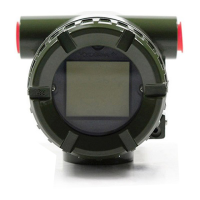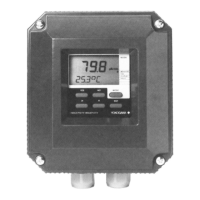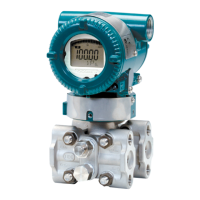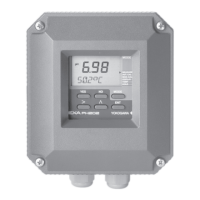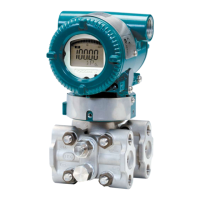<2. Notes on Handling>
2-2
IM 01C50G01-01EN
(3) Impact and Vibration
It is recommended that the instrument be installed
in a location that is subject to a minimum amount of
impact and vibration.
2.5 Use of a Transceiver
IMPORTANT
Although the temperature transmitter is designed
to resist inuence from high frequency noise;
use of a transceiver in the vicinity of installation
may cause problems. Installing the transmitter in
an area free from high frequency noise (RFI) is
recommended.
2.6 Insulation Resistance Test
and Withstand Voltage Test
CAUTION
(1) Overvoltage of the test voltage that is so
small that it does not cause an dielectric
breakdown may in fact deteriorate insulation
and lower the safety performance; to prevent
this it is recommended that the amount of
testing be kept to a minimum.
(2) The voltage for the insulation resistance
test must be 500 V DC or lower, and the
voltage for the withstand voltage test must
be 500 V AC or lower. Failure to heed these
guidelines may cause faulty operation.
(3) For with a lighting protector (option code:/A),
please remove the lightning protector from
terminal at the test. In case of testing with
the lightning protector, the voltage for the
insulation resistance test must be 100V DC
or lower, and the voltage for the withstand
voltage test must be 100V AC or lower.
Failure to heed these guidelines may cause
faulty operation.
Follow the steps below to perform the test, the
wiring of the transmission line must be removed
before initiating testing.
2.6.1 Insulation resistance test procedure
Testing between the output terminal and
input terminal
1. Lay transition wiring between the + terminal,
the – terminal, and the check terminal of the
terminal box.
2. Lay wiring across terminals 1, 2, 3, 4, and 5 of
the terminal box.
3. Connect the insulation resistance meter (with
the power turned OFF) between the transition
wiring of Steps 1 and 2 above. The polarity of
the input terminals must be positive and that of
the output terminals must be negative.
4. Turn the power of the insulation resistance
meter ON and measure the insulation
resistance. The duration of the applied voltage
must be the period during which 100MΩ
or more is conrmed (or 20MΩ if the unit is
equipped with a lightning protector).
5. Upon completion of the test, remove the
insulation resistance meter, connect a 100KΩ
resistor between the transition wiring, and
allow the electricity to discharge. Do not
touch the terminal with your bare hands while
the electricity is discharging for more than 1
second.
Testing between the output terminal and
grounding terminal
1. Lay transition wiring between the + terminal,
the - terminal, and the check terminal of the
terminal box, then connect an insulation
resistance meter (with the power turned OFF)
between the transition wiring and the grounding
terminal. The polarity of the transition wiring
must be positive and that of the grounding
terminal must be negative.
2. Turn the power of the insulation resistance
meter ON and measure the insulation
resistance. The duration of the applied voltage
must be the period during which 100MΩ
or more is conrmed (or 20MΩ if the unit is
equipped with a lightning protector).
3. Upon completion of the test, remove the
insulation resistance meter, connect a 100KΩ
resistor between the transition wiring and the
grounding terminal, and allow the electricity to
discharge. Do not touch the terminal with your
bare hands while the electricity is discharging
for more than 1 second.
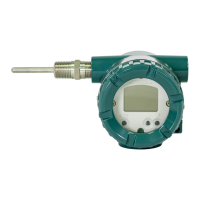
